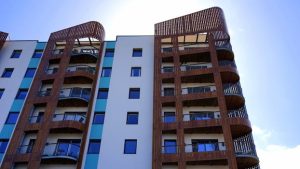Regenerative Housing: Homes That Heal the Environment
When we think of a home, we often imagine it as a refuge, a place where we feel safe and secure. But what if a home could be more than just a shelter? What if it could also heal the environment? This is the concept behind regenerative housing – homes that not only sustain the residents but also have a positive impact on the surrounding ecosystem. As the world faces pressing environmental challenges, regenerative housing is gaining attention as a potential solution. In this article, we will explore the concept of regenerative housing and its benefits for both people and the planet.
The Evolution of Housing
Housing has evolved over time to meet the changing needs and preferences of society. From caves and tents to modern houses and apartments, our homes reflect our lifestyles and values. However, the current housing model is not sustainable. The construction and operation of buildings account for 40% of global energy consumption and contribute 30% of greenhouse gas emissions (1). Additionally, traditional homes are designed to exist separately from nature, often causing harm to the environment.
What is Regenerative Housing?
Regenerative housing is a holistic approach to residential design that aims to create homes that enhance the natural environment instead of depleting it. The concept is inspired by the principles of regenerative agriculture, which focuses on restoring degraded ecosystems and maintaining their health. Just like how regenerative farming practices help improve soil health, regenerative housing seeks to minimize the negative impact on the environment and maximize the positive contributions to the ecosystem.
The Core Principles of Regenerative Housing
The core principles of regenerative housing revolve around the idea of integration and resilience. Instead of viewing a home and its surroundings as separate entities, regenerative housing integrates the building, its inhabitants, and the surrounding environment into a coherent whole. It also aims to create self-sustaining homes that are equipped to withstand environmental stresses and changes.
How Does Regenerative Housing Work?
Regenerative housing employs various strategies to create sustainable and eco-friendly homes. These include using locally-sourced materials, utilizing renewable energy sources, incorporating green spaces, and implementing water conservation and waste management systems. The design and construction of regenerative homes also take into account the orientation of the building, natural light, and ventilation to minimize energy consumption.
Benefits of Regenerative Housing
Besides reducing our impact on the environment, regenerative housing offers numerous benefits for individuals and communities. For instance, the use of natural and sustainably-sourced materials creates healthier indoor environments by reducing indoor air pollution. Incorporating green spaces also helps improve mental and physical well-being by providing a connection to nature. Additionally, regenerative housing has the potential to create more community-oriented and resilient neighborhoods, fostering a sense of belonging and collaboration.
The Future of Housing
The need for sustainable and regenerative housing is only going to increase as the global population grows, and the impacts of climate change intensify. Luckily, there is a growing interest in this concept, and several projects are already underway to make it a reality. With advancements in technology and research, we can look forward to more innovative and efficient regenerative housing solutions in the future.
Conclusion
Regenerative housing offers a promising solution to transform our homes from passive structures to active contributors to the environment. It challenges us to think beyond the traditional housing model and create homes that are not just shelters but also agents of change. As we continue to face environmental challenges, regenerative housing is a step towards a more sustainable and resilient future.
Reference:
(1) Intergovernmental Panel on Climate Change, Buildings and construction. IPCC Special Report on Global Warming of 1.5°C [Masson-Delmotte, V., P. Zhai, H.-O. Pörtner, D. Roberts, J. Skea, P.R. Shukla, A. Pirani, W. Moufouma-Okia, C. Péan, R. Pidcock, S. Connors, J.B.R. Matthews, Y. Chen, X. Zhou, M.I. Gomis, E. Lonnoy, T. Maycock, M. Tignor, T. Waterfield (eds.)]. In Press.











